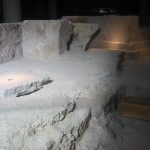International conducting competition “Llíria, City of Music” 2023

Information
- Artistic Director: Cristóbal Soler
- Dates: July 17-22, 2023
- Registration period: from April 24 to May 8
The International conducting competition “Llíria, City of Music”, organized by Lliria’s City Council and AESDO, aims to discover and promote young conductors from all over the world.
Directors of all nationalities who, as of April 24 do not exceed 35 years of age, may compete.
The contest is structured in 4 phases, and a pre-selection will be made through the video material sent, with a maximum of 25 directors who will be selected for the first phase.
€ 8,500 will be awarded in prizes and the possibility of being invited to direct the collaborating orchestras of the contest during the 2025/2026 and 2026/2027 seasons:
Spanish Radio and Television Symphony Orchestra (ORTVE); Valencia Symphony Ochestra (OV); Symphony Orchestra The System of Venezuela; ADDA Shymponic Orchestra of Alacant; Málaga Philharmonic Orchestra (OFM); Symphony Orchestra of Murcia Community (OSRM); City of Granada Orchestra (OCG); Oviedo Filarmonía (OFIL); Orchestra of Extremadura (OEX), and Symphony Orchestra of Andalucía.

Candidates

























Jury
The evaluation committee for each one of the phases will consist of the following members:
- President: Manuel Galduf.
Orchestra conductor. Principal conductor of the Valencia Orchestra (1983-1997)
- Spokesperson: Virginia Martínez.
Chief Conductor and artistic director of the Region of Murcia Symphony Orchestra
- Spokesperson:Filipe Cunha
Chief Conductor of the Braga Philharmonic Orchestra (Portugal) since 2014. Braga is a UNESCO Creative City.
- Spokesperson: Andrés Ascanio Abreu.
Musical artistic director of Shympony Orchestra The System from Venezuela.
- Spokesperson: Cristóbal Soler Almudéver.
Musical director of La Zarzuela’s Theatre (2010-2015). Associated conductor of Navarra Shymphony Orchestra (2013-2016). Musical artistic director of Youth Orchestra SS.MM. of Comunitat Valenciana.
- Secretary: Teresa Segura Martínez.
Auxiliary technic of City Council of Llíria.
Phases:
First phase
SCHOENBERG A. Pierrot Lunaire
(Universal Edition).
Second phase
HOLST G. St.Paul ́s Suite Op 29 n 2
(Curwen Edition, G.Schirmer).
Third phase
HAYDN J. Sinfonía no 49 La Pasión.
(Breitkopf edition).
Fourth phase and final concert
EDO AMPARO. Monologue (chamber ́23) for chamber orchestra
TCHAIKOVSKY P. Variaciones Rococo para cello y orquesta
(Ed. Kalmus).
BEETHOVEN, Ludwig van. Egmont (Obertura) Op.84
(Breitkopf & Härtel Edition).








